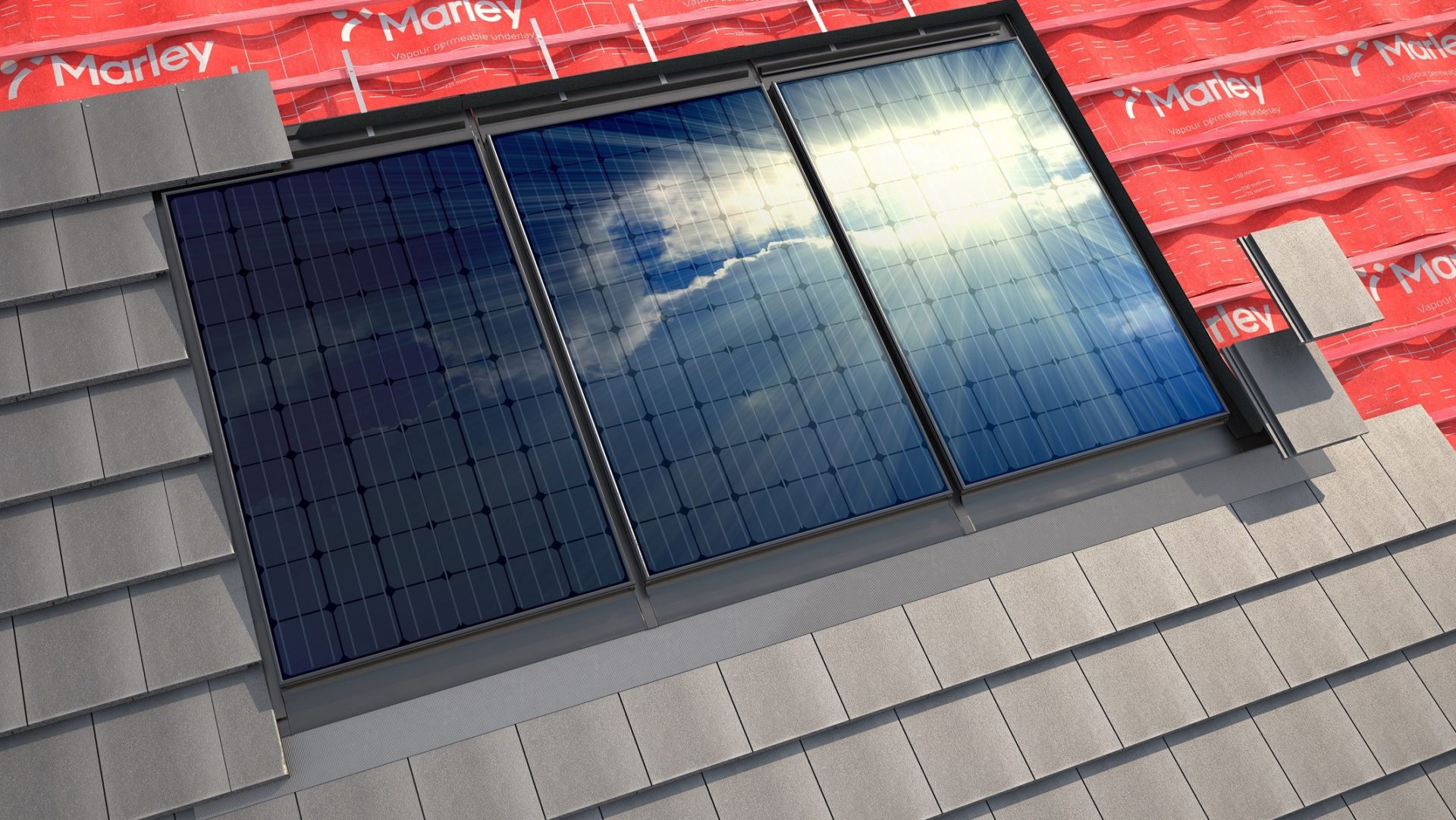Stuart Nicholson from Marley provides some pointers on how to ensure successful solar PV roof installations

With all new homes expected to produce 31% lower carbon emissions from 2021, as part of the Future Homes Standard and changes to Part L regulations, demand for solar PV (photovoltaic) roof installations is soaring – and expected to increase fivefold over the next four years.
But there are concerns over the quality of panel installation on some solar PV roofing projects. The following six pointers are crucial to ensuring a fault-free solar installation.
- When thinking about solar panel installs that will integrate with an existing interlocking tiles roofscape, installers should set the lower gap at 130-150mm. When working on a slate roof, it is best to align the bottom edge of the solar panel with the slate line. This may require that the slates below the panels are nailed in advance of the panels being fitted.
- Installations should start at the bottom left of the area and move to the right as each column is finished.
- Installations must comply with local regulations on lightning protection so check this is in place.
- It is important to electrically test each solar panel prior to installation. It is recommended that the panel’s electrical cables are passed through the roofing membrane laps for connection inside the building or connected to adjacent panels in the batten space.
- Always choose to connect panels in rows or columns based on how shaded the roof area could potentially be.
- Remember, final electrical connection and sign off must be completed by an MCS certified installer.
Further information is available from Marley to help contractors gain confidence with solar panel installation, including its roof-integrated SolarTile product.
Stuart Nicholson is roof systems director at Marley.











